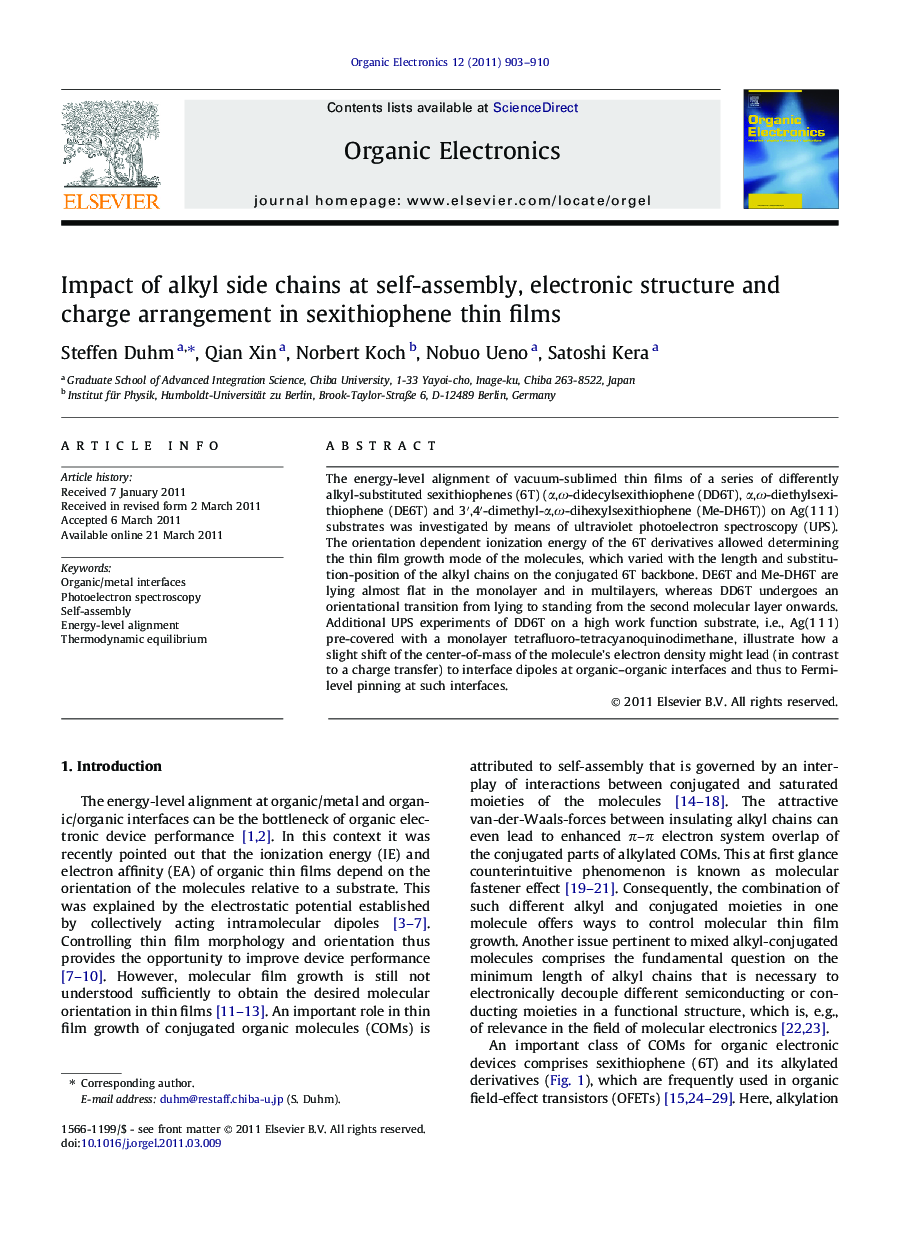| Article ID | Journal | Published Year | Pages | File Type |
|---|---|---|---|---|
| 1267684 | Organic Electronics | 2011 | 8 Pages |
The energy-level alignment of vacuum-sublimed thin films of a series of differently alkyl-substituted sexithiophenes (6T) (α,ω-didecylsexithiophene (DD6T), α,ω-diethylsexithiophene (DE6T) and 3′,4′-dimethyl-α,ω-dihexylsexithiophene (Me-DH6T)) on Ag(1 1 1) substrates was investigated by means of ultraviolet photoelectron spectroscopy (UPS). The orientation dependent ionization energy of the 6T derivatives allowed determining the thin film growth mode of the molecules, which varied with the length and substitution-position of the alkyl chains on the conjugated 6T backbone. DE6T and Me-DH6T are lying almost flat in the monolayer and in multilayers, whereas DD6T undergoes an orientational transition from lying to standing from the second molecular layer onwards. Additional UPS experiments of DD6T on a high work function substrate, i.e., Ag(1 1 1) pre-covered with a monolayer tetrafluoro-tetracyanoquinodimethane, illustrate how a slight shift of the center-of-mass of the molecule’s electron density might lead (in contrast to a charge transfer) to interface dipoles at organic–organic interfaces and thus to Fermi-level pinning at such interfaces.
Graphical abstractThe molecular orientation and thus the energy-level alignment of alkylated sexithiophene derivatives on Ag(111) depends critically on the substitution-position and the length of the alkyl chains.Figure optionsDownload full-size imageDownload as PowerPoint slideHighlights► Substitution-position and length of alkyl chains of 6T derivatives important for self-assembly of these molecules. ► Orientation of molecules impacts energy-level alignment. ► Charge transfer across long alkyl chains implausible.
